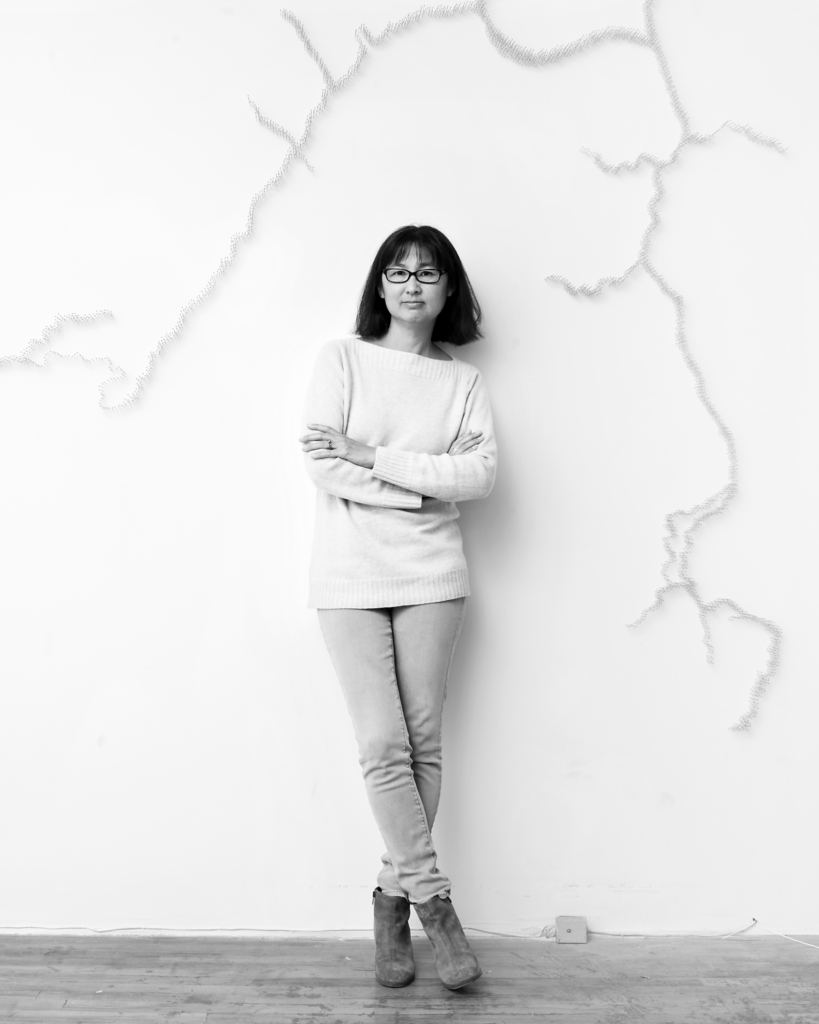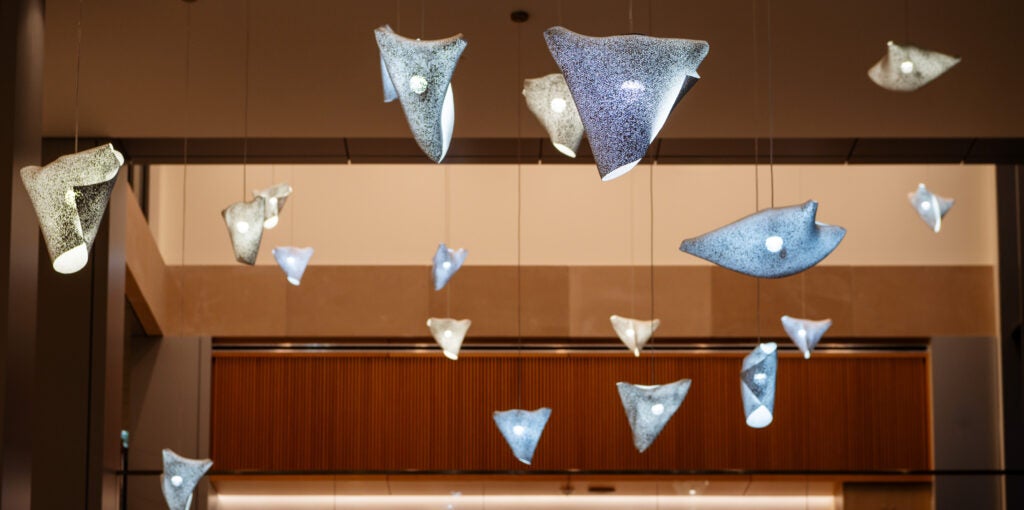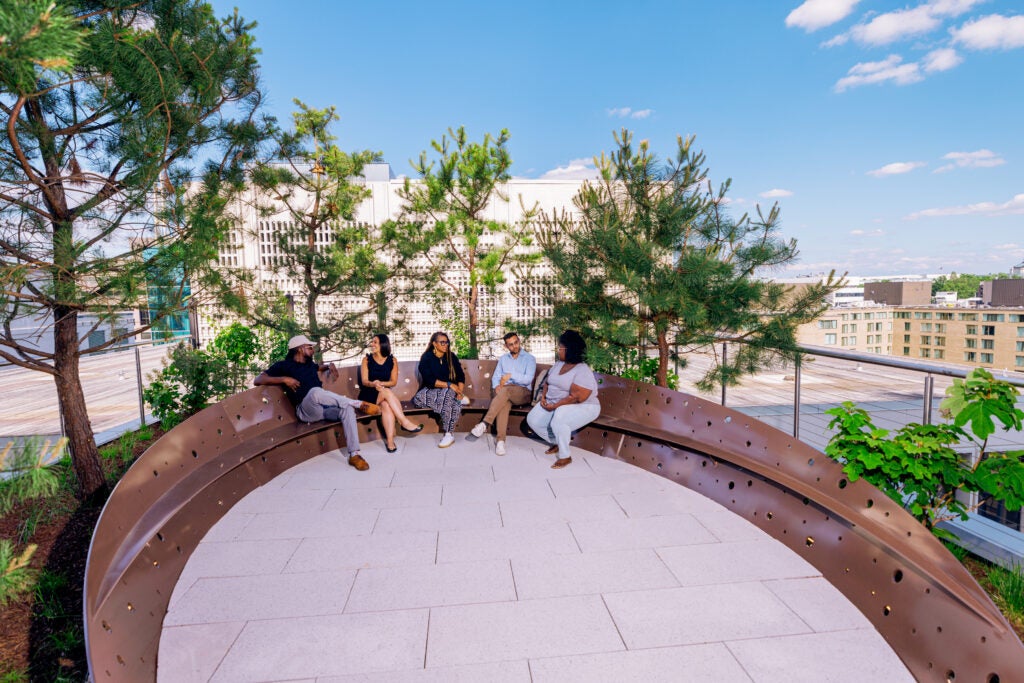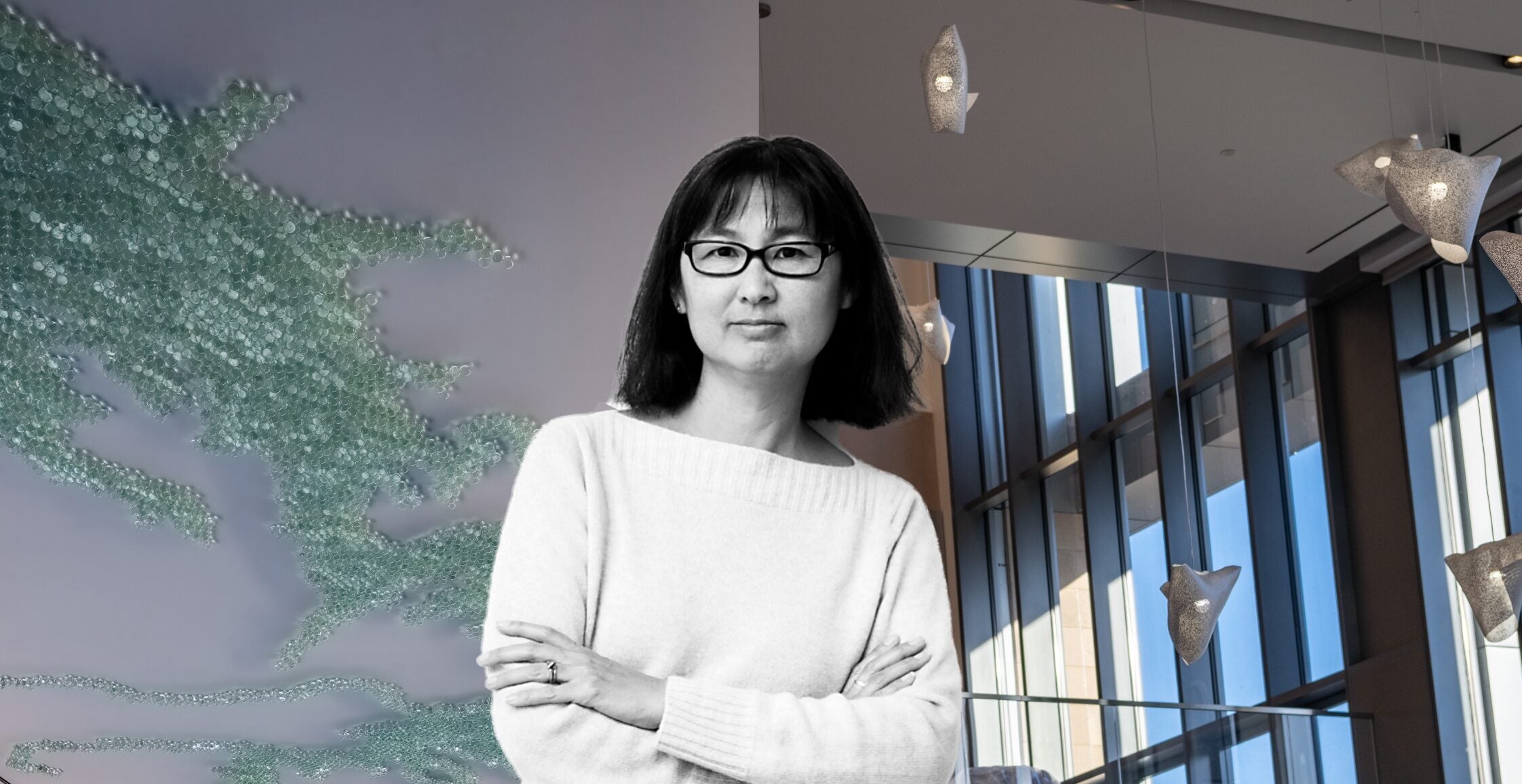Maya Lin reflects on her original multi-part installations for 125 E St.
The renowned architect and designer’s artwork, “Mapping our Place in the World,” complements the McCourt School’s mission and values.

Maya Lin, Photograph by Jesse Frohman
At just 21 years old, Maya Lin was thrust into the spotlight in 1981 when, as a senior at Yale University, she submitted the winning design in a national competition for the Vietnam Veterans Memorial to be built in Washington, DC.
Lin has since created a legacy of large-scale environmental artworks and architectural and memorial designs. Her work explores how we experience and relate to landscape, constructing a systematic ordering of land tied to history, memory, time and language. Her interest in landscape design has led to works influenced by topographies and geographic phenomena.
That influence informs the three original installations Lin created for the McCourt School of Public Policy’s new home,125 E St., on Georgetown University’s Capitol Campus. Lin calls the multi-part installation “Mapping our Place in the World.”
“My approach to this work tries to ground you in your physical surroundings, with different elements coming together to help give you an immediate sense of place — capturing the sounds, weather, seasons, main waterways and native trees, grasses and flowering plants in the DC area,” said Lin. “By making you aware of your natural surroundings, I also was thinking about how visitors would reflect on a larger idea of where their place is in the world, which responds to the studies of the McCourt School.”
In this Q&A, Lin reflects on her original installations at 125 E St. and what she hopes viewers will take away from them.

“Following the Potomac” is a ceiling-mounted sculptural installation made of reflective glass marbles that map the Potomac watershed.
Q: “Following the Potomac” is a gorgeous piece of art and a geographic representation of the iconic river. Tell us more about the thinking and process that went into this work.
A: “Following the Potomac” is a ceiling-mounted sculptural installation made of reflective glass marbles that map the Potomac watershed. It greets visitors and leads them into the Capitol View Convening Space Sky Room.
Our ability to view the planet from above has significantly changed our view of the landscape and our relationship to it. We tend to best understand water in a hyper-local sense by where our own feet are planted.
“Following the Potomac” is part of an ongoing, site-specific series of river drawings that aims to ground the viewer in the important local waterways nearest to them. The drawings capture each waterway as a singular body of water and present the beauty, importance and interconnectedness of these complex waterways, which I see as natural drawings made by the natural flow of the water.

The “Whether Birds” installation is programmed to reflect the weather outside through gentle shifts in color temperature.
Q: The “Whether Birds” installation is one of the first things visitors see when they enter 125 E St. Expand more on the various aspects of this work and what you hope people take from it.
A: All the lights on “Whether Birds” are programmed to reflect the weather outside through gentle shifts in color temperature — orange and warm white when it’s sunny, cool white when it’s cloudy, pale lilac when it’s snowy and blue when it’s rainy.
Sounds from overhead directional speakers also follow your path ascending and descending the central stair. The recordings consist of sounds from natural areas around the DC area that capture local waterways, wetlands, forests and grasslands.
Recordings were taken at different times of the year and times of day, reflecting seasons and the days’ rhythm — spring, summer, fall and winter as well as pre-dawn, morning, noon, late-afternoon, dusk and night.

The “Sky Garden” is surrounded by native plants and provides a respite for McCourt School community members and guests to sit and contemplate.
Q: With its inviting flora and calming pools, “The Sky Garden” is a jewel that beckons visitors as a respite to sit and contemplate or just take in the view of the U.S. Capitol. How do the different elements of this installation interconnect?
A: This garden features three distinct zones of native plants, enhancing the building’s connection to the regional ecology. The landscape reflects the artwork’s intention to enhance the building’s sense of place and rootedness within the natural environment.
On the north side, the garden is planted with a forest of birches and Pitch Pines that surround you with an understory of ferns and grasses that offer a more private, secluded landscape. This striking planting will provide a viewing garden from within the building, creating a verdant backdrop for school gatherings.
On the south side of the Capitol View Convening Space, the plantings open up to a mix of native flowering trees and understory, creating a verdant framing of views of the U.S. Capitol and the elliptical pools that invite visitors to sit and gather around.
Overall, the garden connects visitors to the changing seasons through plantings with different blooms, berries and fall color.
